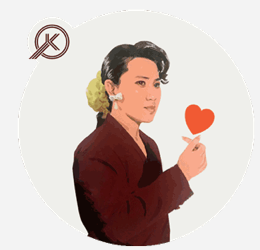Sights in Dushanbe
Dushanbe Sights: The former state department store
This Dushanbe building is now home to small business selling everything from mobile phones, carpets and souvenirs. It retains some of it charm and features in the heart of the city.
Dushanbe Sights: Hotel Tajikistan
A 4-star hotel in Dushanbe built in 1975 formerly part of the Intourist chain (the official state travel agency of the Soviet Union). Even after a refit in 2002 it still retains some of its Soviet features.
Dushanbe Sights: Rudaki Avenue (formerly Lenin Avenue)
This runs through the heart of the city. This wide street with its tree-lined central walkway cuts past some of the main administrative buildings, invoking memories of the cities former soviet grandeur.
Dushanbe Sights: Many of the local apartments
For those interested in the Soviet local life, these local Dushanbe apartments are just a short walk from the main city centre. Here there are many amazing Gems from the 60s and 70s.
For those not just interested in the cities soviet past, Dushanbe can be a fascinating place nestled amongst mountains which remain snow capped for most of the year giving a feeling of seclusion.
In places, Dushanbe has a small-town feel offering the visitor a great city for walking and exploring the tree-lined streets. With a number of parks, squares, statues and water fountains meeting locals can be a great plus especially during many of the public holidays celebrated in the city.
Dushanbe Sights: Rudaki Park
Named after the poet Rudaki who penned over a million poems, the statue of whom takes centre place in this city-centre gem, it offers a relaxed feel to any visitor with a quiet hum during holiday periods.
Rudaki overseas a small stage with a stunning rainbow arc as his backdrop surrounded by many imported shrubs and trees the park has its own eco climate even pleasant during a hot summer’s day.
Dushanbe Sights: Victory Park
Construction began in 1975 and was completed in 1985. This park in Dushanbe, as the name suggests, is named in honour of the great patriotic war 1941-1945. It is located on the outskirts of the city and takes quite a walk to get there. When at its heart visitors are met by a large square with inscribed back drop, there is a vent for the eternal flame which is now only lit during victory day on the 8th
May. The park also offers some of the best views of Dushanbe from the base of the city cable car which is of classic soviet design and only now runs around Victory day.
With longer to spend in Dushanbe this city can accommodate many visitors’ needs with its water parks, stadiums and theatres it is also home to varied museums and the world’s second-largest flagpole. Museums of note are listed below they tend to have similar opening times although these tend to vary during national holiday periods.
Dushanbe Sights: Tajikistan national museum
This modern building is worth the visa just to view its stunning architectural design, as well as its location next to the world’s second-largest flagpole.
Once inside, depending on your interests, it is a museum of ups and downs. Some boring, some not.
Our personal pick is the gifts given to the Tajik president from other world leaders. The 14 M statue of the Buddha, however, is a copy of the one located in the Museum of Antiquities (see below).
Dushanbe Sights: National museum of antiquities
Great for historians and those who love an ageing soviet museum, it showcases the history of the country although most information is either in Russian or Tajik. A visit is well worthwhile if just to view the 14 meters long reclining Buddha dating from the 7th century.
Dushanbe Sights: Rohat Chaikhona
The oldest tea house in Dushanbe best viewed for its ageing yet beautiful architecture. Have a drink but avoid the food.
Dushanbe Sights: Statue of Ismail Samani
This massive statue is constructed to honour Abu Ibrahim Ismail Ibn Ahmad - better and more easily known as Ismail Samani.
During his life 849 - 907 he was seen as a strong general, and an even stronger ruler bringing together the Persian tribes and areas, rising from ruler of Bukhara to ruler of Transoxia.
At the decline of the Soviet Union, he has quite literally filled the shoes of these modern leaders. The once Stalin peak (Tajikistan’s tallest mountain), has now been renamed Ismail Samani peak, the currency is now called the Somoni.
This brings us back to his statue which now fills the shoes of the former Lenin statue.
It’s an impressive 13M high set in a 43-meter arch. If this wasn’t impressive enough, it is said that his crown contains 10KG of Tajik gold.
Dushanbe Sights: Kokhi Navruz
Once named the world’s largest tea house, this can only be described as palatial. It’s a huge building of opulent design.
This amazing building not only houses a leisure centre but also restaurants and even a shopping area.
Visiting is via appointment to the main rooms which are guided by one of the brilliant guides on site.
The core rooms are used for hosting foreign dignitaries as well as weddings and other banquets.
Each of the rooms is handcrafted and as the visitors pass from room to room each has its own wow factor.
TAJIKISTAN TRAVEL GUIDE
